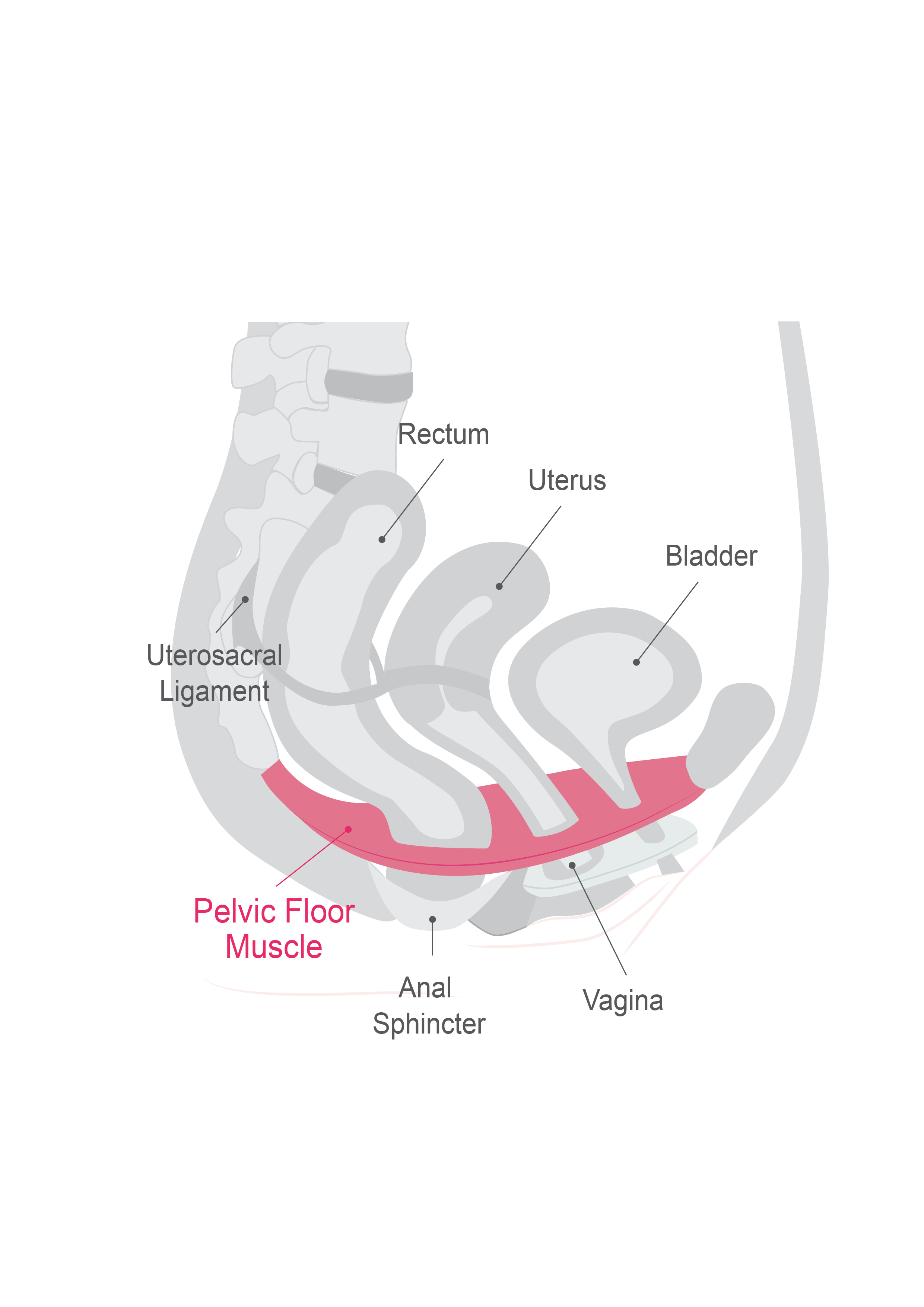The Pelvic Floor Muscle

Your pelvic floor muscle wraps around the canals like a rubber band and controls the opening and shutting of the urethra, vagina canal, and anus. When you contract your pelvic floor muscles, the sphincters tighten the openings of the vagina, anus, and urethra. Relaxing the pelvic floor allows the passage of urine and faeces.
During sexual intercourse, the tightness and sensation perceived by you and your partner are due to the grip of the pelvic floor around the vaginal canal.
On top of supporting your pelvic organs, your pelvic floor muscle also holds your back in place and relieves the back of the stress and strain from everyday activities like lifting and bending.
What are the Symptoms of Weak Pelvic Floor Muscles?

The symptoms of weak pelvic floor muscles are:
- Leaking small amounts of urine when coughing, sneezing, laughing or running
- Failing to reach the toilet in time
- Reduced sensation in the vagina and the quality of sex life
- Uncontrollably breaking wind from either the anus or vagina when bending over or lifting
- Perpetual backache
- Tampons that dislodge or fall out
- A distinct swelling at the vaginal opening
- A sensation of heaviness in the vagina
If you experience one or more of the above, your pelvic floor muscle may be weak.
When To Do Pelvic Floor Exercises?
Pelvic floor exercises are beneficial and can be done by any woman at any age:
- For mothers, pelvic training can help in the recovery of your pelvic floor muscle from the strain of pregnancy, preventing urinary incontinence and improving your sex life.
- For mothers to be, pelvic training is recommended before and throughout pregnancy, in order to strengthen and properly prepare your body for the growing baby.
- For women experiencing incontinence, pelvic training can help with treating incontinence and improve bladder control.
It is advisable for women to do pelvic floor exercises as early as possible to prevent experiencing the symptoms of weak pelvic floor muscles.
The Ministry of Health and Aging Australia quotes :

Benefits of Pelvic Floor Exercise
There are many benefits of Pelvic Floor Exercise. If it is done correctly, it will increase the strength of your pelvic floor muscles which help cure all the symptoms that you experience. These are some of the benefits of pelvic floor exercise:
- Better bladder control
- Improve sexual health
- Relieve back pain
- Increase overall core strength
- Feel confident and in control
- Better sleep (do not need to wake up at night to pee)

When To Seek Treatment?
The most important thing about this exercise is doing it right. Do check out the tips by practicing Women’s Health Physiotherapist on getting Kegel exercise right.
If you are still experiencing the above symptoms after doing the pelvic floor exercise for a few months, you may need personal guidance from professionals. At Vibrance, we offer one to one personal guidance to help and guide you to do pelvic floor exercises correctly. You will be able to see faster improvement when you know you are doing this exercise correctly.
We are offering Pelvic Consultation, Pelvic Assessment and Pelvic Treatment for your Pelvic Health. Kindly contact us for more info and understanding about your Pelvic Health.
